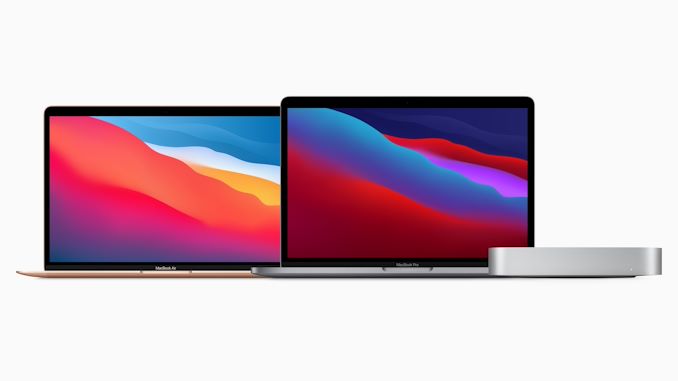
As previously announced by Apple this summer, the company is embarking on a major transition within its Mac product lineup. After almost a decade and a half of relying on Intel’s x86 processors to serve at the heart of every Mac, the company is going to be shifting to relying on its own, in-house designed Arm processors to power their now un-PC computers. At the time Apple set the start of the transition at the end of this year, and right on cue, today Apple announced the first three Apple Silicon-powered Macs: the Late 2020 editions of the MacBook Air, the 13-Inch MacBook Pro, and the Mac Mini.
Three of the lower-end devices within the Mac family, Apple is starting small for their Arm transition. The Mac Mini is of course the smallest and most integrated of Apple’s desktop-style computers. Meanwhile the MacBook Air and MacBook Pro are Apple’s two 13.3-inch laptops, focused on portability and performance respectively. Fittingly, these are also the areas where performance-per-watt is generally the most critical, as Apple is very strongly power-constrained on these platforms, and thus performance-limited as well.
Before diving into the individual Macs, it’s interesting to note just how little is changing on the outside. The new machines are all clearly reusing the designs of their x86-based predecessors, if not parts of the shell in some cases. And unlike the transition to x86 that started in 2006, Apple isn’t even cleaning the slate with product naming – the Arm-based Macs all continue the MacBook/Mac Mini naming rather than being the progenitors of new families of machines. Apple wants to make the transition to Arm Macs as seamless as possible, and this goes right on down to their design and product names. So although guts will be entirely different, these new products are still designed to be Macs in every appreciable way.
Powering all three of these new machines will be Apple’s first Mac-focused Apple Silicon chip, the Apple M1. Our own Andrei Frumusanu has a detailed breakdown on the new M1 chips and what we expect from them based on Apple’s A14 SoC used in the recently-launched iPhone 12 family. But in short, M1 looks a lot like a beefier A14, with four of Apple’s high-performance Firestorm cores – 2 more than on A14 – joined by four high-efficiency Icestorm cores. Meanwhile the GPU design has been bulked up to 8 cores there as well, doubling A14. Finally, joining this are various other functional blocks for the SoC, including a flash storage controller, a secure enclave, Apple’s neural engine (NPU), and a Thunderbolt 3 + USB 4 controller. All of this, in turn, is made on a 5nm process – no double the same TSMC 5nm process that Apple used for the A14.
MacBook Air (Late 2020)
Starting things off, we have the MacBook Air. The most recently (re)introduced member of Apple’s Mac lineup, the Air is the company’s smallest and cheapest laptop. The final Intel revision of the laptop was launched in March, where it shipped with Intel’s Ice Lake-Y processors, topping out with the quad CPU core i7-1060NG7. The newest model picks up where the previous one left off, swapping out Intel’s silicon for Apple’s own M1 processor.
| MacBook Air Specifications | |||||||
| Model | Late 2020 | Mid 2020 | Mid 2019 (Base) | Late 2018 (Base) | |||
| Dimensions | Width | 30.4 cm | |||||
| Depth | 21.2 cm | ||||||
| Height | 0.41 - 1.61 cm | 0.41 - 1.61 cm | 0.41 - 1.56 cm | ||||
| Weight | 2.8 lbs (1.29 kg) | 2.8 lbs (1.29 kg) | 2.75 lbs (1.25 kg) | ||||
| CPU | Apple M1 4C/4T Highi-Perf + 4C/4T High-Eff |
Core i3-1000NG4 2C/4T 1.10 - 3.20 GHz Core i5-1030NG7 Core i7-1060NG7 |
1.6 GHz (3.60 GHz Turbo) Core i5 2 CPU Cores |
||||
| GPU | Apple M1 Integrated (7 or 8 Cores) |
Intel Iris Plus | Intel UHD Graphics 617 | ||||
| Display | 13.3-inch 2560x1600 IPS LCD P3 with True Tone |
13.3-inch 2560x1600 IPS LCD sRGB with True Tone |
13.3-inch 2560x1600 IPS LCD sRGB |
||||
| Memory | 8 - 16 GB LPDDR4X-4266 | 8 - 16 GB LPDDR4X-3733 | 8 GB LPDDR3-2133 | ||||
| SSD | 256 GB - 2 TB | 256 GB - 2 TB | 128 GB PCIe | ||||
| I/O | 2x USB4 Type-C w/Thunderbolt 3 3.5mm Audio |
2x USB 3.1 Type-C w/Thunderbolt 3 3.5mm Audio |
|||||
| Battery Capacity | 49.9 Wh | 50.3 Wh | |||||
| Battery Life | 15 - 18 Hours | 11 - 12 Hours | 12 Hours | ||||
| Price | $999 | $999 | $1099 | $1199 | |||
The star of the show is of course Apple’s M1. Because the company has changed so little outside (there are a few things, which we’ll get to), the bulk of Apple’s focus in promoting the new MBA is based on performance and battery life – which is to say performance, power consumption, and performance-per-watt. Among figured quoted by the firm include up to 3x better CPU and 5x better GPU performance than a last-generation Intel-based MBA, and perhaps more directly relevant, enough performance to play back multiple 4K ProRes streams without dropping a frame. In other words, the new MacBook Air should be significantly more powerful than the previous one.
Driving this laptop are two versions of the M1 chip. The more expensive, $1249 model of the MBA gets a fully-enabled 8 CPU core plus 8 GPU core version of the M1. Meanwhile the entry-level $999 model gets a reduced 8 CPU/7 GPU version of the chip. This is apparently where Apple is sending binned/salvaged M1 chips, as TSMC’s 5nm process is no doubt temperamental in its early days. Unfortunately, not published in any Apple documentation are clockspeeds, so we have no idea how the two models will compare to each other in terms of performance beyond the influence of an 8th GPU core.
The MacBook Air is now fanless, harkening back to the retired 12-inch MacBook. It’s not clear whether Apple has set the M1 to a nominally lower TDP than the Intel CPUs (10 Watts), or if they’re simply more confident about the boost and throttle mechanics of their own chip. Either way, this does mean that we expect the MacBook Air to throttle under heavy, sustained workloads, not unlike the iPhones. This is the cost of having a fanless, passively-cooled design.
The benefit to that, of course, being that there are no fans to make noise, break, or get clogged with dust. This kind of reliability was one of the great thinks about the old MacBook and was a notable loss with the previous MacBook Air, so it’s good to see that Apple has brought it back. This also helps to further differentiate the MacBook Air from the similarly-sized 13-inch MacBook Pro, as it means there should be a meaningful performance difference between the devices, and there will definitely be a noise difference.
Like all of the M1-based Macs, Apple is offering two memory configurations and four storage configurations. The base model gets 8GB of LPDDR4X memory and 256GB of flash storage, and this can be dialed up to 16GB of memory and 2TB of flash. It goes without saying that all of this is soldered down – in the case of the RAM, directly on to the M1 package – so there are no end-user upgrade options.
Apple rates the battery life on the MBA at up to 15 hours of web browsing and 18 hours of movie playback, which is 4 and 6 hours longer than their rating on the Intel model. Respectively. The laptop comes with the same capacity 49.9 watt-hour battery as the previous model, so all of these measurements are being done against equivalent batteries. However, as Ian Cutress noted, Apple doesn’t seem to be entirely equalizing for brightness in their testing – setting the two Macs to the same brightness setting rather than ensuring they’re at the same measured brightness in nits – so it’s not clear if that plays a role. In either case, however, Apple is clearly positioning the new MBA to last a lot longer than the previous model.
The switch to M1 also means that the Air’s I/O functionality gets an upgrade. The SoC supports an odd combination of Thunderbolt 3 and the new USB 4 (but not the all-encompassing Thunderbolt 4), so the laptop’s two USB-C ports inherit this functionality. And, as required by USB 4, this includes DisplayPort alt mode functionality. On which note, the laptop also inherits M1’s support for a single external display, up to 6K@60Hz (i.e. Apple’s XDR display). Meanwhile, on the right side of the laptop, Apple continues to provide a 3.5mm combo headset jack.
Meanwhile, Apple has also given the MacBook Air an unexpected display upgrade. The laptop, which previously used a 2560x1600 pixel sRGB-gamut display now offers a 2560x1600 pixel P3-gamut display, the same gamut as offered by the MacBook Pro family. Apple does not publish complete gamut coverage specifications, so it’s not clear how much of the P3 gamut that the new MBA does cover, and how that compares to the MacBook Pros. Apple is normally very good here, but that will be something worth checking out. This also means it’s unclear whether Apple has just upgraded the laptop’s backlighting to drive the wider gamut, or if the panel itself has been updated as well.
Finally, it’s worth noting that in today’s presentation, Apple also brought up the matter of image quality from their integrated, front-facing Facetime camera. According to the company, they’re putting the M1’s superior ISP to good use here in order to offer better noise reduction, a higher dynamic range, and a better white balance. However the hardware spec sheet still lists the laptop as using a 720p Facetime camera, so at a minimum it’s safe to say that Apple’s resolution hasn’t improved; otherwise we’ll have to see if there are any other hardware changes driving the rest of those improvements.
As with all three Apple Silicon-based Macs, the Late 2020 MacBook Air is set to be available next week, on November 17th.
13-Inch MacBook Pro (Late 2020)
Counterpoint to the light and ultraportable MacBook Air is the 13-inch MacBook Pro. Based around an identical-sized 13.3-inch panel as the MBA, the 13-inch MBP is Apple’s more productivity-focused Mac laptop, generally offering better performance and more I/O options than the MBA. With the switch to Apple’s Arm-based M1 processor, this is still the case, though how exactly the laptops differ has changed some.
As with the MacBook Air, the smaller of the Pro laptops is almost entirely an upgrade to the guts of the machine, with no notable external changes. Apple isn’t updating the screen, Apple isn’t changing the size of the laptop, or even changing the battery; this is largely just the M1-ization of the MBP. Of particular note here, the Late 2020 13-inch MacBook Pro is technically only a replacement for the lower-end 13-inch MBP, commonly referred to as the Two Thunderbolt 3 ports model, which relative to everything else in Apple’s lineup was fairly dated. Apple is continuing to sell the higher-end model from earlier this year, which uses more recent Intel chips.
| MacBook Pro 13-Inch (2 Port) Specifications | ||||
| Model | Late 2020 | Mid 2020 | Mid 2019 | |
| CPU | Apple M1 4C/4T Highi-Perf + 4C/4T High-Eff |
1.4 GHz/3.9 GHz Core i5-8275U 4C/8T (Coffee Lake) |
1.4 GHz/3.9 GHz Core i5-8275U 4C/8T (Coffee Lake) |
|
| GPU | Apple M1 Integrated (8 Cores) | Intel Iris Plus Graphics 645 (128MB eDRAM) |
Intel Iris Plus Graphics 645 (128MB eDRAM) |
|
| Display | 13" 2560 x 1600 IPS LCD P3 Gamut, True Tone, 500 nits |
|||
| Memory | 8 - 16 GB LPDDR4X-4266 | 8 - 16 GB LPDDR3-2133 | 8 - 16 GB LPDDR3-2133 | |
| SSD | 256 GB - 2 TB | 256 GB - 2 TB | 256 GB - 2 TB | |
| Touch Bar | Yes | |||
| I/O | 2x USB4 Type-C w/Thunderbolt 3 3.5mm Audio |
2x USB 3.1 Gen 2 Type-C w/Thunderbolt 3 3.5mm Audio |
||
| Battery Capacity | 58.2 Wh | |||
| Battery Life | 17 - 20 hours | 10 Hours | ||
| Dimensions | 1.56 cm x 30.41 cm x 21.24 cm | |||
| Weight | 3.0 lbs (1.4 kg) | 3.1 lbs (1.4 kg) | 3.02 lbs (1.37 kg) | |
| Launch Price | $1299 | $1299 | $1299 | |
Since this new MBP is designed to replace the low-end model, the change on the CPU front is especially significant. Apple is going from Intel’s Core 8000 series (Coffee Lake-U) chips to the M1, so the M1 is a leapfrog in both expected CPU performance and graphics performance. In this case it’s 8 CPU cores (4B + 4L) versus Intel’s 4 CPU cores, and Apple’s 8 core GPU design against Intel’s eDRAM-backed Gen9.5 iGPU, which used 48 EUs. These old Intel CPUs were still based on their 14nm process, so going from that to the 5nm-based M1 means that Apple gets both an architectural upgrade and a big manufacturing boost at the same time.
As with the MBA, there are no clockspeeds disclosed, so we have no idea how that compares to the MBA or the new Mac Mini. But the MBP it replaces was nominally a 15 Watt TDP part, and I’d expect the new model to be similarly tuned. On which note, the 13-inch MBP is actively cooled with a fan, so unlike the passively cooled MBA, expect the MBP to do better under sustained loads, as it has the necessary cooling to keep itself from throttling as much under heavy workloads.
There is only one SoC configuration being offered here: a full-fat M1 with 8 CPU cores and 8 GPU cores. So upgrade options are limited to changing out the RAM and storage. Here Apple offers 8GB or 16GB of LPDDR4X RAM (another improvement over the previous MBP), and storage starts at 256GB for the $1299 model, with prices going much, much higher ($2099) for 2TB of flash storage.
Rounding out the package is an identical capacity 58.2 watt-hour battery. So like the MBA, battery life comparisons are reasonable apples-to-apples to the previous generation laptop. In which case Apple is claiming that the M1-based MBP will get up to 17 hours of web browsing and 20 hours of video playback, which is an improvement of 7 and 10(!) hours respectively. At least with M1-based devices, it would seem the bigger the battery, the greater the battery life gains.
Finally, as this model replaces the old two-port MBP, the new MBP also gets two ports. Once again both on the left side, the laptop features two USB-C ports capable of Thunderbolt 3 and USB4, being driven by the M1 SoC. Given that no M1 machine ships with more than this – not even the Pro-focused MBP – it’s reasonable to assume that two ports is a limitation of the M1 SoC. The new MBP is no worse than the old one, but it’s also no better – and it’s easy to see why Apple is keeping the higher-end Intel model around for now.
As for the display, unlike the MBP it doesn’t appear that Apple has made any changes here. The Late 2020 MBP is listed as offering the same 2560x1600 P3 display as the previous model, both with a maximum brightness of 500 nits. External display users will want to make note, however, that unlike the Intel MBPs, this new one can only support a single external display. The good news is that it can go up to 6K@60Hz, but if you were accustomed to driving a pair of displays off of a MBP, then the new M1-based model won’t quite measure up.
The Late 2020 13-inch MacBook is set to be available next week, on November 17th. Prices start at $1299 for the 8GB/256GB model, and $1499 for the 8GB/512GB model.
Mac Mini (Late 2020)
Last but certainly not least among the new Arm-based Macs is the sole desktop of the group, the Mac Mini. Apple used a modified Mini as the basis for the Developer Transition Kits (DTKs), so it’s only fitting that the Mini is also one of the first retail systems to ship with an M1 SoC. Besides being Apple’s cheapest Mac, the Mini sits in an interesting place in Apple’s lineup as the only true stand-alone desktop other than the pricey Mac Pro, so it has developed an eclectic following of users, ranging from desktop users to server admins. This also means that despite being little more than a body for the parts inside, it sees some of the most significant changes of any of the Macs in getting its M1 SoC upgrade.
| Apple Mac Mini Specifications | |||
| Late 2020 | Late 2018 | ||
| CPU | Apple M1 4C/4T Highi-Perf + 4C/4T High-Eff |
Core i3-8100B 4C/4T 3.6 GHz Core i5-8500B Core i7-8700B |
|
| Graphics | Apple M1 Integrated (8 Cores) | Intel UHD Graphics 630 | |
| Memory | 8 - 16 GB LPDDR4X-4266 | 8 GB DDR4-2666 (SO-DIMMs) Configurable to 16 GB, 32 GB or 64 GB DDR4-2666 |
|
| Storage | 256 GB - 2 TB | 128 GB PCIe SSD Configuratble to 256 GB, 512 GB, 1 TB, or 2 TB SSD |
|
| Ethernet | 1 GbE or 10 GbE | 1 GbE or 10 GbE | |
| I/O | 2x USB4 Type-C w/Thunderbolt 3 2x USB 3.2 Gen 1 Type-A |
4 × USB 3.1 Gen 2 (10 Gbps) Type-C w/ Thunderbolt 3 2 × USB 3.0 Type-A (5 Gbps) |
|
| Dimensions | Width | 19.7 cm | 19.7 cm |
| Height | 3.6 cm | 3.6 cm | |
| Depth | 19.7 cm | 19.7 cm | |
| PSU | ~ 150 W (internal) | ~ 150 W (internal) | |
Prior to today, the Mini was another system running relatively old Intel hardware. The system hadn’t been updated since 2018, at which point it received Intel’s eighth-generation Coffee Lake CPUs. While the chip options here included four and six CPU cores, the graphics side was notably weaker than the more powerful options found in the 13-inch MBP, never mind discrete graphics. So the M1 stands to be a significant upgrade over those earlier offerings, especially when it comes to graphics. And while I have no doubts the M1 can surpass the older Intel chips here, it will be interesting to see whether only 4 high-performance cores is enough to go up against the 6 cores offered by the higher-end Intel configuration.
On which note, Apple is continuing to sell the 6 core Intel model. The other, cheaper models have been retired with the introduction of the Late 2020 Mac Mini, however there is still one final Intel configuration to last for now. And while Apple doesn’t comment on otherwise trivial matters such as these, given the hardware differences, I strongly suspect the Intel model is being kept around (for now) for customers that have extensive RAM or I/O needs.
For the M1-based Mac Mini then, the RAM and storage options are the same as the other M1-based Macs. This means just 8 or 16GB of memory, and anywhere between 256GB and 2TB of flash storage. The base configuration starts out at 8/256 for $699, while the higher-end SKU gets 8/512 for $899. And because this is the M1, this is all once again soldered down.
The lack of more thorough expandability options is a notable departure from the earlier Mac Mini. That Mac used SO-DIMMs for memory, not only allowing users to install their own memory upgrades, but to install greater amounts of memory altogether – up to 64GB. But the use of soldered, on-package memory with the M1 means that expandable memory is no longer an option. Not that you can get LPDDR4X in SO-DiMM form, either.
The Late 2020 Mac Mini’s I/O options aren’t quite as robust, either. Whereas the 2018 model offered three USB-C supports, all supporting Thunderbolt 3 and USB 3.1 Gen 2 (10Gbps), the newer model has two ports sporting Thunderbolt 3 and USB4. USB4 itself is a welcome upgrade, but it won’t help if you need more USB-C ports. Otherwise, the rest of the port collection remains unchanged, with an HDMI 2.0 port, two USB Type-A ports, and a 1Gbps (or 10Gbps) Ethernet jack. Ultimately, we’re seeing what I suspect are the limitations of the M1; Apple kept things simple by only relying on the ports the SoC could directly drive, and it can only directly drive two such high-speed ports.
Between all of those ports, in turn, the Mac Mini can drive two displays. One can be a DisplayPort/Thunderbolt-type display hooked up to the USB-C ports, and the other needs to be an HDMI display hooked up to the aforementioned port. Like the MBP, this is a step forward in regards to the best display supported (now up to 6K@60Hz), but a step backwards in the total number of displays supported, since the older Mac Mini could drive a total of three displays.
Other than this, however, the Mac Mini may just end up being the best performing of the new M1-based Macs. With the same chassis as the previous 65W TDP model, including a fan for active cooling, the new Mac Mini has plenty of cooling headroom to work with for the M1 SoC. So with both power and cooling properly provided for, this is the Mac that has the best chance of sustaining the M1’s highest clockspeeds under a full load.
But as always, the we’ll have to see if real-world results can live up to Apple’s claims. The Mac Mini ships alongside the rest of the Macs on November 17th, so we shouldn’t be waiting too long to see what the new Mini and the rest of the new Apple Silicon-based Macs are capable of.
Technology - Latest - Google News
November 11, 2020 at 08:45AM
https://ift.tt/3pjFE5R
Apple Intros First Three 'Apple Silicon' Macs: Late 2020 MacBook Air, 13-Inch MacBook Pro, & Mac Mini - AnandTech
Technology - Latest - Google News
https://ift.tt/2AaD5dD
Bagikan Berita Ini
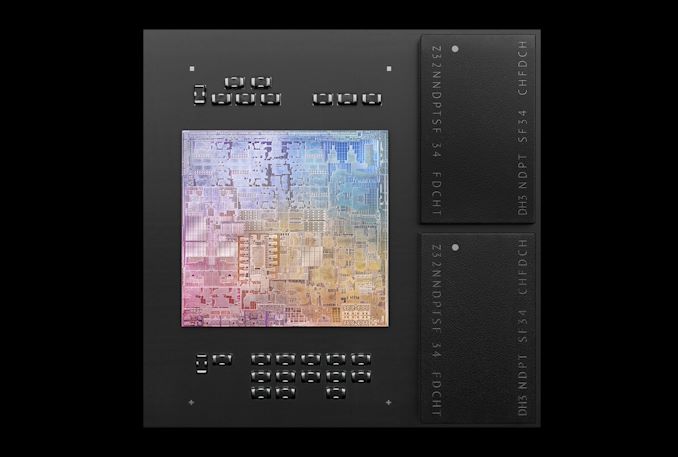

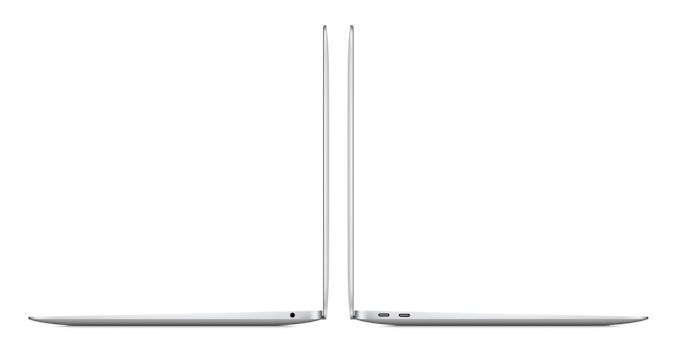
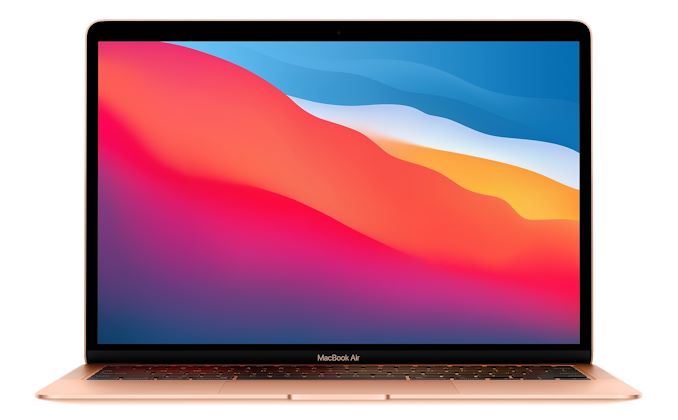

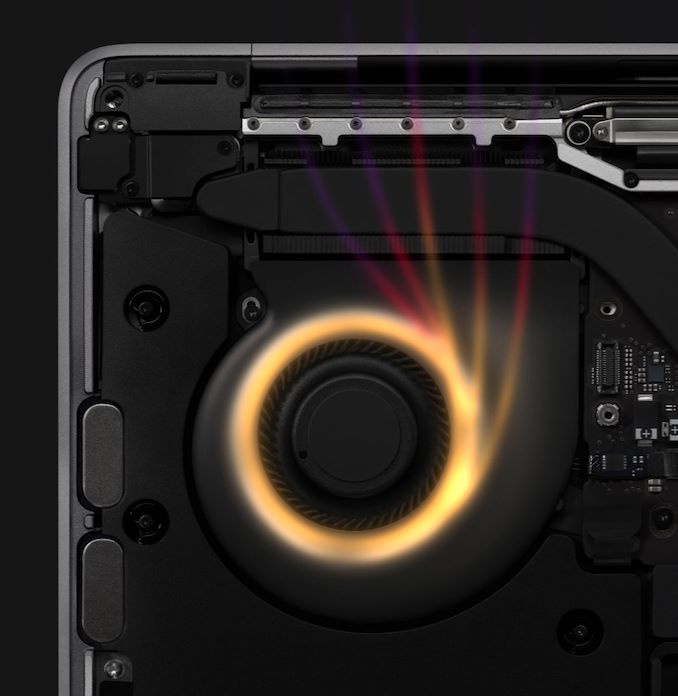
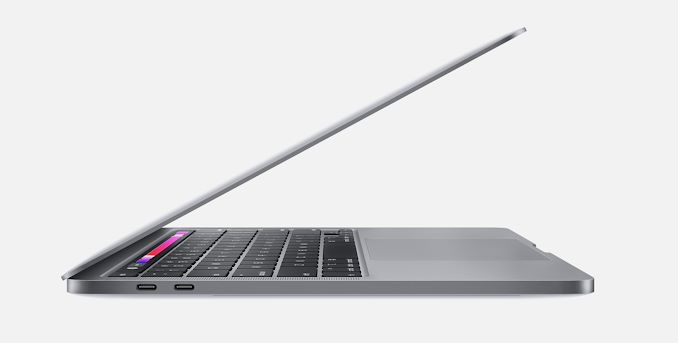
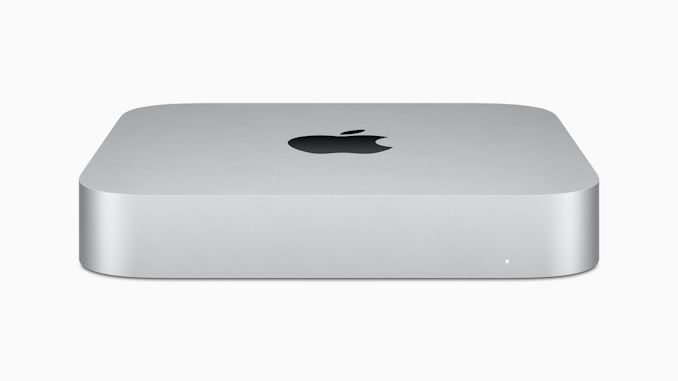
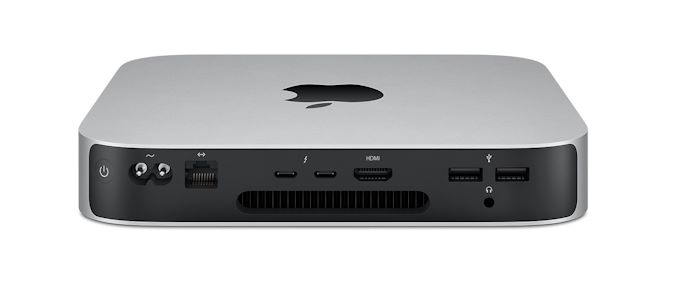
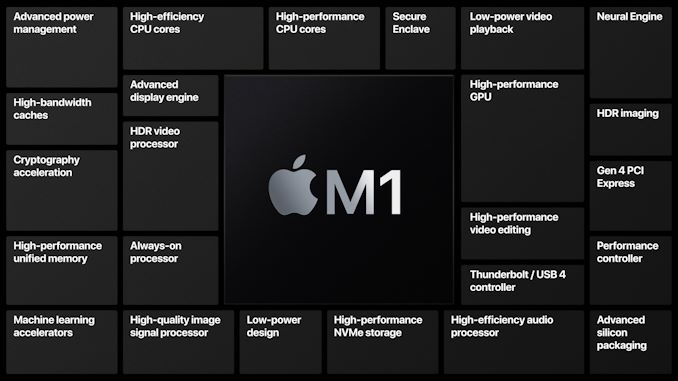














0 Response to "Apple Intros First Three 'Apple Silicon' Macs: Late 2020 MacBook Air, 13-Inch MacBook Pro, & Mac Mini - AnandTech"
Post a Comment